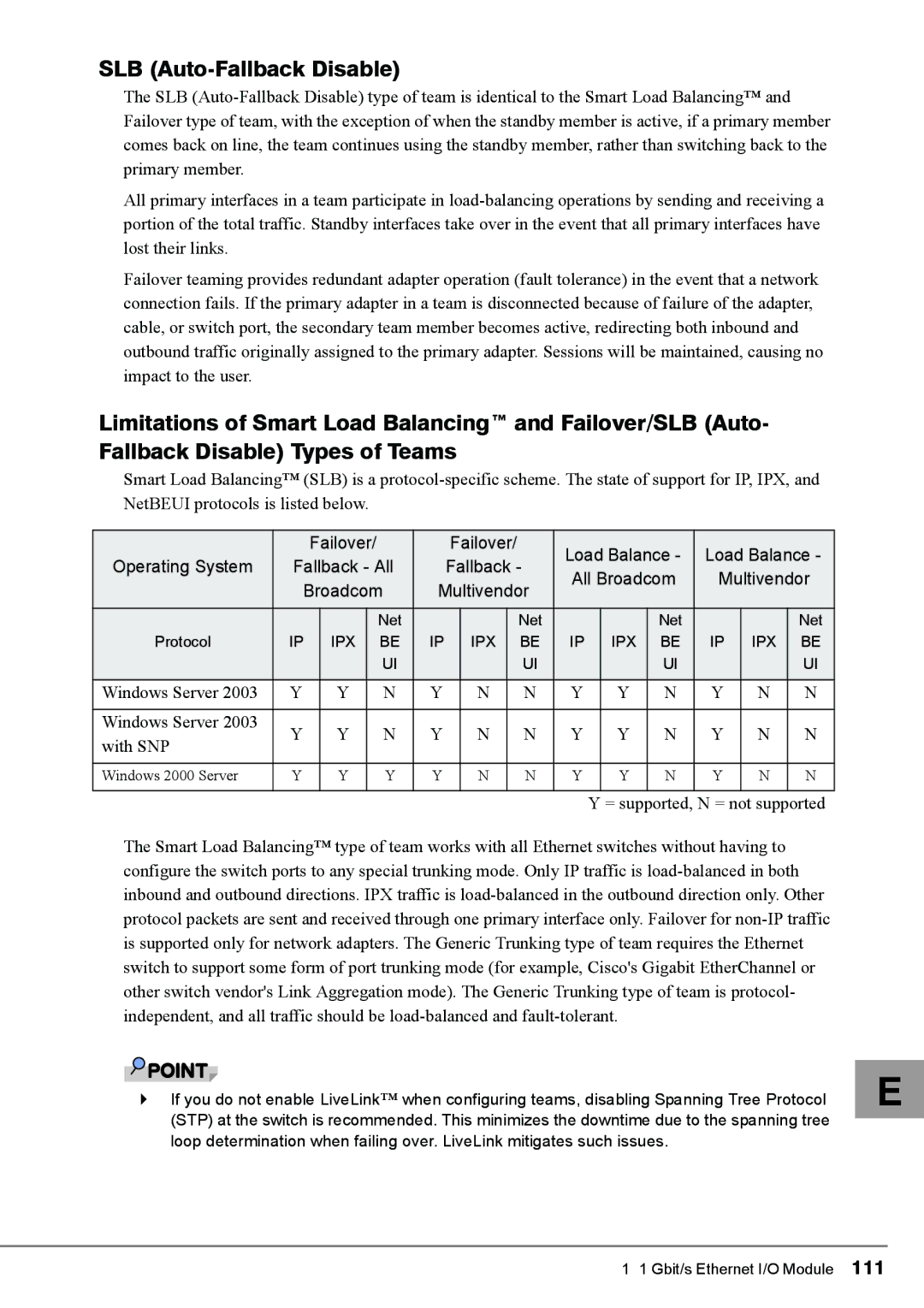
SLB (Auto-Fallback Disable)
The SLB
All primary interfaces in a team participate in
Failover teaming provides redundant adapter operation (fault tolerance) in the event that a network connection fails. If the primary adapter in a team is disconnected because of failure of the adapter, cable, or switch port, the secondary team member becomes active, redirecting both inbound and outbound traffic originally assigned to the primary adapter. Sessions will be maintained, causing no impact to the user.
Limitations of Smart Load Balancing™ and Failover/SLB (Auto- Fallback Disable) Types of Teams
Smart Load Balancing™ (SLB) is a
|
| Failover/ |
|
| Failover/ |
| Load Balance - | Load Balance - | ||||||||||
Operating System | Fallback - All |
| Fallback - | |||||||||||||||
| All Broadcom | Multivendor | ||||||||||||||||
| Broadcom | Multivendor | ||||||||||||||||
|
|
|
|
|
|
|
| |||||||||||
|
|
|
|
| Net |
|
|
|
| Net |
|
|
| Net |
|
| Net | |
Protocol | IP |
| IPX |
| BE | IP |
| IPX |
| BE | IP |
| IPX | BE | IP | IPX | BE | |
|
|
|
|
| UI |
|
|
|
| UI |
|
|
| UI |
|
| UI | |
Windows Server 2003 | Y |
| Y |
| N | Y |
| N |
| N | Y |
| Y | N | Y | N | N | |
|
|
|
|
|
|
|
|
|
|
|
|
|
|
|
|
|
| |
Windows Server 2003 | Y | Y | N | Y | N | N | Y | Y | N | Y | N | N | ||||||
with SNP | ||||||||||||||||||
|
|
|
|
|
|
|
|
|
|
|
|
|
|
|
|
| ||
|
|
|
|
|
|
|
|
|
|
|
|
|
|
|
|
|
| |
Windows 2000 Server | Y |
| Y |
| Y | Y |
| N |
| N | Y |
| Y | N | Y | N | N | |
|
|
|
|
|
|
|
|
|
|
|
|
|
|
|
|
|
| |
|
|
|
|
|
|
|
|
|
|
|
| Y = supported, N = not supported | ||||||
The Smart Load Balancing™ type of team works with all Ethernet switches without having to configure the switch ports to any special trunking mode. Only IP traffic is
`If you do not enable LiveLink™ when configuring teams, disabling Spanning Tree Protocol (STP) at the switch is recommended. This minimizes the downtime due to the spanning tree loop determination when failing over. LiveLink mitigates such issues.
E
1 1 Gbit/s Ethernet I/O Module 111
